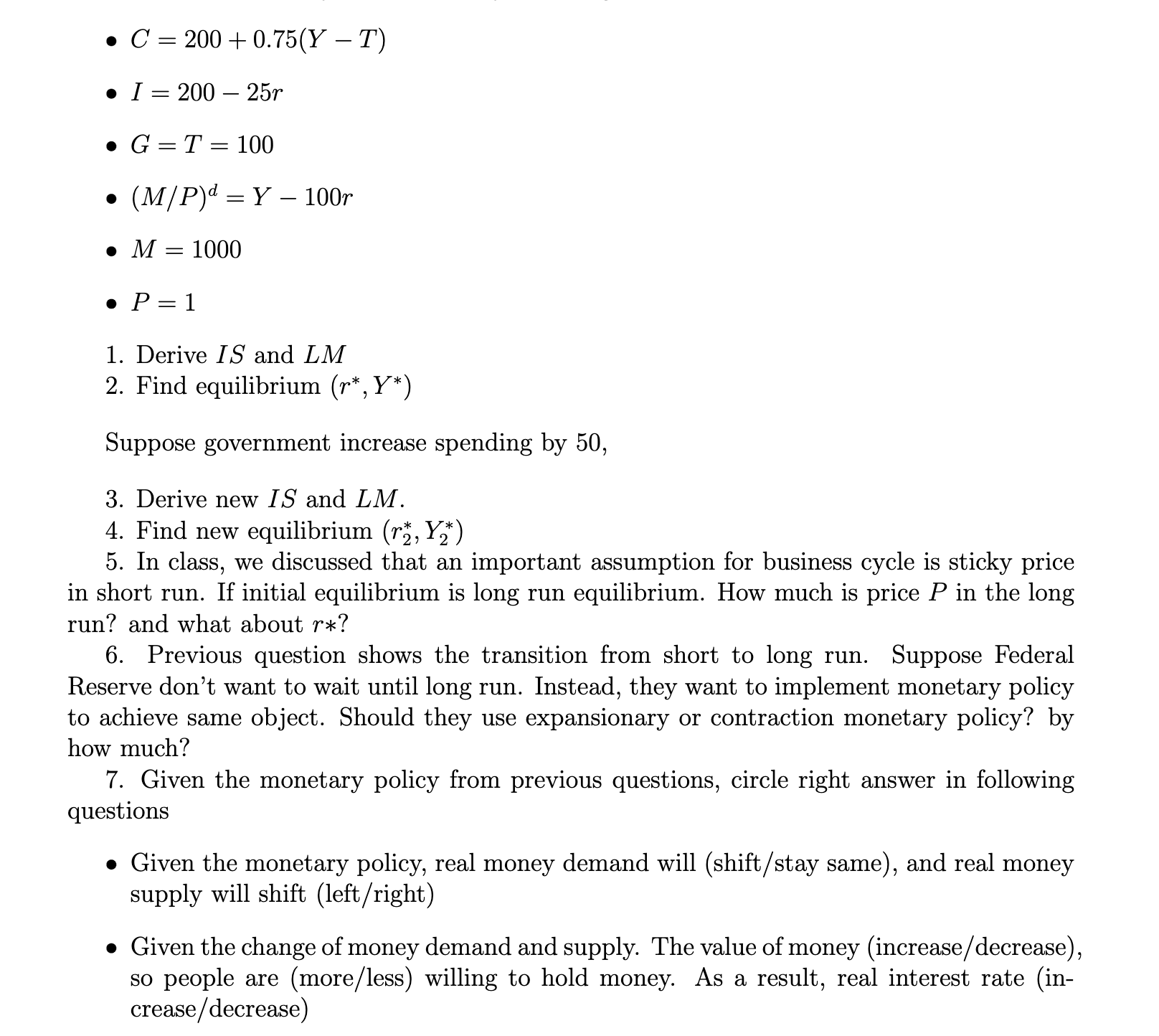Answered step by step
Verified Expert Solution
Question
1 Approved Answer
C = 200 +0.75(Y T) I 200 25r - G = T= 100 (M/P) = Y 100r . M = 1000 P= 1 1.


C = 200 +0.75(Y T) I 200 25r - G = T= 100 (M/P) = Y 100r . M = 1000 P= 1 1. Derive IS and LM 2. Find equilibrium (r*,Y*) Suppose government increase spending by 50, 3. Derive new IS and LM. 4. Find new equilibrium (r, Y*) 5. In class, we discussed that an important assumption for business cycle is sticky price in short run. If initial equilibrium is long run equilibrium. How much is price P in the long run? and what about r*? 6. Previous question shows the transition from short to long run. Suppose Federal Reserve don't want to wait until long run. Instead, they want to implement monetary policy to achieve same object. Should they use expansionary or contraction monetary policy? by how much? 7. Given the monetary policy from previous questions, circle right answer in following questions Given the monetary policy, real money demand will (shift/stay same), and real money supply will shift (left/right) . Given the change of money demand and supply. The value of money (increase/decrease), so people are (more/less) willing to hold money. As a result, real interest rate (in- crease/decrease) Given the change of interest rate, demand for investment will (increase/decrease), which will (increase/decrease) planed expenditure, so (increase/decrease) output. 8. Reset everything to initial value. Suppose Federal Reserve increases money supply to 1200. However, government wants to stabilize output by tax policy. Should government increase or decrease tax? by how much?
Step by Step Solution
★★★★★
3.34 Rating (148 Votes )
There are 3 Steps involved in it
Step: 1

Get Instant Access to Expert-Tailored Solutions
See step-by-step solutions with expert insights and AI powered tools for academic success
Step: 2

Step: 3

Ace Your Homework with AI
Get the answers you need in no time with our AI-driven, step-by-step assistance
Get Started


